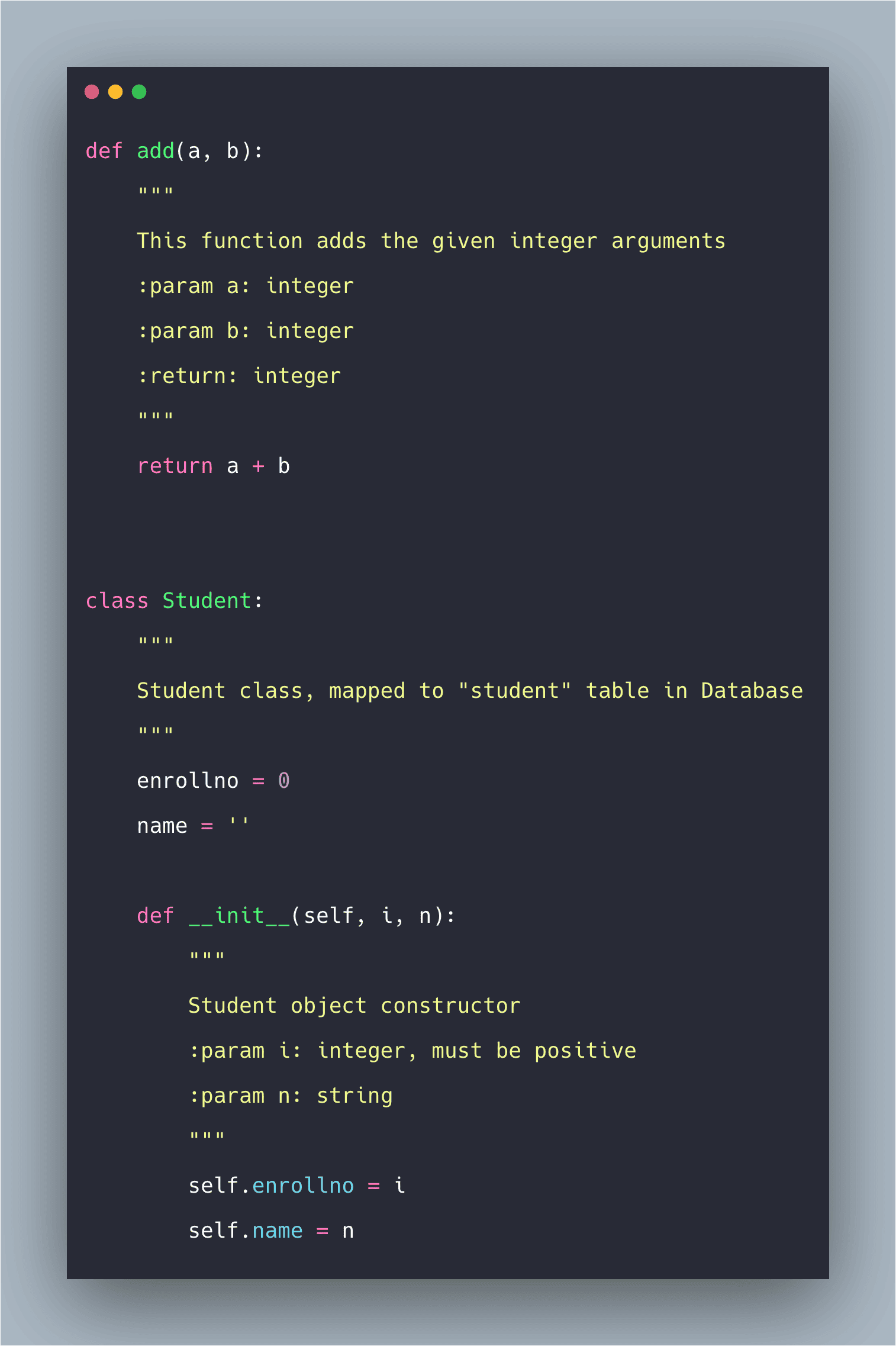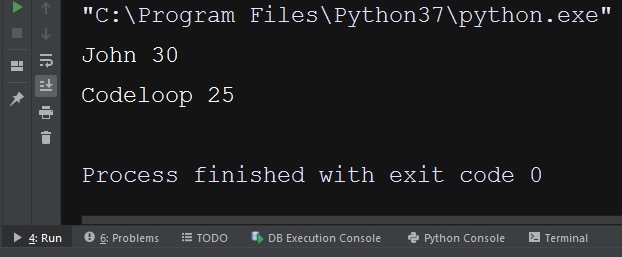Python Tutorial Classes Class And Object Is The Most Important Part Of Python Oops.
Python Tutorial Classes. In This Tutorial We Learn Python Class And Object With Examples.
SELAMAT MEMBACA!
Python is an object oriented programming language.

A class is like an object constructor, or a blueprint for creating objects.
Classes provide a means of bundling data and functionality together.
Creating a new class creates a new type of object, allowing new instances of that type to be made.

We will go over class/instance variables, inheritance, getters/setters, and much more.
In this tutorial, you will learn about the core functionality of python objects and classes.
You'll learn what a class is, how to create it and use it in your program.

A python 3 programming tutorial for beginners.
Defining and using custom classes what are classes?
First class class attributes functions and methods defining methods when defining the class when should i.

If something has been done before, why should you do it again?
That is what functions cover in python.
You've already had your code do something special.

Get started learning python with datacamp's free intro to python tutorial.
Learn data science by completing interactive coding challenges and watching videos by expert instructors.
Objects get their variables and functions from classes.
![Python Tutorial - 39 - Classes [7/11] Encapsulation - All ...](https://www.allfreevideotutorials.com/wp-content/uploads/2019/01/python-tutorial-39-classes-7-11-400x300.jpg)
Classes are used to create objects which have functions and variables.
Strings are examples of objects:
A string book has the functions we can create virtual objects in python.

A program may have many different types and are.
In this python class tutorial, we are going to explore about python classes.
How they work and access.
Atlast, we cover how can we delete an object, attributes, or a class in python.
Welcome to lesson six, classes tutorial, which is a part of the python course offered by simplilearn.
The attributes are data members.

In python, the constructor method is invoked automatically whenever a new object of a class is instantiated, same as constructors in c# or java.
Class defines the data types, functions, behaviours but do not holds any data or mostly can not used in a practical manner in python.
Below we have detailed most common usage scenarios of class mechanism in python.

Before writing the code, we should have an idea of the theory.
Read the following sections, and don't worry if you are still confused.
Once you get to the code, you will see everything coming together.
![Python Tutorial - 35 - Classes [3/11] class variables ...](https://www.allfreevideotutorials.com/wp-content/uploads/2019/01/python-tutorial-35-classes-3-11.jpg)
Basically, everything in python is an object — lists , tuples all python objects are based on classes.
A class is basically a template for objects.
It contains the definition of the object.
For the most part, i just want you to just understand how to read and understand a as you get comfortable with python, classes can become an absolutely integral part of our programs.
Here is the sample code to supplement the video.
This python tutorial is for beginners and intermediate learners who are looking to master in python programming.

Python class is concept of object oriented programming.
So how does python know the type of an object?
How does it know which methods and variables exist for a type?
![Python Tutorial - 34 - Classes [2/11] self & __init__ ...](https://www.allfreevideotutorials.com/wp-content/uploads/2019/02/python-tutorial-34-classes-2-11.jpg)
The data and procedures inside an object is known as attributes and methods respectively.
Before we create objects, we first have to define a class.
Notice that each method has a first parameter named self.

The self parameter refers to the.
In this tutorial, we'll go through creating classes, instantiating objects, initializing attributes with the constructor method, and working with class — a blueprint created by a programmer for an object.
This defines a set of attributes that will characterize any object that is instantiated from this class.

In this post we will dive into python classes, methods, objects and using the init constructer to initialize classes.
Object oriented programming has gone well past being a fad (sorry punchcards) like it or not encapsulation and inheritance is winning out.
This blog on 'python class' deals with the fundamentals of class, attribute and various oops concepts such as inheritance, polymorphism and encapsulation.

In this tutorial of python classes, you'll find helpful examples that show how to use and instantiate python classes.
In short, a python class is for defining a particular type of object.
Because python objects can have both function and data elements, python classes define what methods can be used.
![Python Tutorial - 40 - Classes [8/11] Inheritance - YouTube](https://i.ytimg.com/vi/nttSMBbylmo/hqdefault.jpg)
Using classes as collection of functions.
Local variables and object variables.
It will be a good idea to go through the concepts of functions and scope of variables (local and global variables) before you start this tutorial.

In this tutorial we learn python class and object with examples.
Almost everything in python is considered as an object, with its properties.
Data classes are one of the new features of python 3.7.

This code, as well as all other examples in this tutorial, will only work in python 3.7 and above.
A data class comes with basic functionality already.
3 X Seminggu Makan Ikan, Penyakit Kronis Minggat4 Manfaat Minum Jus Tomat Sebelum TidurTips Jitu Deteksi Madu Palsu (Bagian 2)Ini Manfaat Seledri Bagi KesehatanCegah Celaka, Waspada Bahaya Sindrom Hipersomnia7 Makanan Sebabkan SembelitSalah Pilih Sabun, Ini Risikonya!!!5 Manfaat Meredam Kaki Di Air EsGawat! Minum Air Dingin Picu Kanker!Segala Penyakit, Rebusan Ciplukan ObatnyaThis code, as well as all other examples in this tutorial, will only work in python 3.7 and above. Python Tutorial Classes. A data class comes with basic functionality already.
Python is an object oriented programming language.

It does not have to be named self , you can call it whatever you like, but it has to be the first.
Python classes provide all the standard features of object oriented programming:
The class inheritance mechanism allows multiple base as in smalltalk, classes themselves are objects.
![Python Tutorial - 36 - Classes [4/11] Terminal Game [1/3 ...](https://www.allfreevideotutorials.com/wp-content/uploads/2019/01/python-tutorial-36-classes-4-11.jpg)
Python objects and classes defining a class in python in this tutorial, you will learn about the core functionality of python objects and classes.
Classes are used to create objects which have functions and variables.
Strings are examples of objects:

A virtual object can contain variables and methods.
A program may have many different types and are created from a class.
Get started learning python with datacamp's free intro to python tutorial.

Ready to take the test?
Head onto learnx and get your python certification!
Classes are a fundamental part of modern programming languages.

Declaring objects (also called instantiating a class).
When an object of a class is created, the class is said to be instantiated.
Early computer languages, like c, did not have these are some of python's native classes, but we can build our own class too!

No tutorial is complete without a.
Because of this, creating and using classes and objects are overview of oop terminology.
In this tutorial you will learn, how to create classes and objects in python.

An object is an entity which contains data as well as procedures that operates on the in python, the self parameter is required for every method.
The self parameter refers to the object that invokes that method.
This python tutorial is for beginners and intermediate learners who are looking to master in python programming.

In this python class tutorial, we are going to explore about python classes.
How they work and access.
On the other hand, we will discuss what is the python object and different attributes belong to python class.

Python tutorial on classes, objects, methods:
In this post we will dive into python classes, methods, objects and using the init constructer to initialize classes.
Object oriented programming has gone well past being a fad (sorry punchcards) like it or not encapsulation and inheritance is winning out.

Python is an object oriented programming language (oop).
Oop is a way to build software.
With oop you can make your program much more organized, scalable, reusable and extensible.
In the real world, for example, there may be thousands of cars in existence, all of the same make and model.
In object oriented programming (oop) objects are used to store data and functions defined inside a class.
When we define a class we define just a blueprint or we just map data members and member functions.

In this tutorial we learn python class and object with examples.
In python oops introduction, we came to know that what are classes and objects in python.
Python classes and objects are the core building blocks of python programming language.

At first, you put the name of the new object which is followed by the assignment operator and the name of the class with parameters (as defined in the.
This python tutorial by tech with tim introduces objects and classes in python.
This tutorial is not meant for you to understand and be able to create your own classes.

What are classes and objects in python?
Python is an object oriented programming language.
Object is simply a collection of data (variables) and methods (functions) that act on those data.

A class in python is the blueprint from which specific objects are created.
Oop is a development model which lets a programmer focus on producing reusable code.
This is the python classes and objects part of our entire python tutorial.

Python classes provide a means of bundling data and functionality together.
In the example above, we mentioned the attribute that we wanted in this article, we took a look at the objects and classes in python through some visual examples.
If you have any questions, please mention them in the comments section, and.

For example, the base class element stores the parent of el as a cython attribute _parent but it does not.
Python sees them as builtin objects and you do not have access to some of their internal data structure. Python Tutorial Classes. For example, the base class element stores the parent of el as a cython attribute _parent but it does not.5 Cara Tepat Simpan Telur3 Cara Pengawetan CabaiPecel Pitik, Kuliner Sakral Suku Using BanyuwangiKuliner Jangkrik Viral Di JepangSusu Penyebab Jerawat???Petis, Awalnya Adalah Upeti Untuk RajaBuat Sendiri Minuman Detoxmu!!Resep Ayam Suwir Pedas Ala CeritaKuliner5 Trik Matangkan ManggaNikmat Kulit Ayam, Bikin Sengsara
Komentar
Posting Komentar